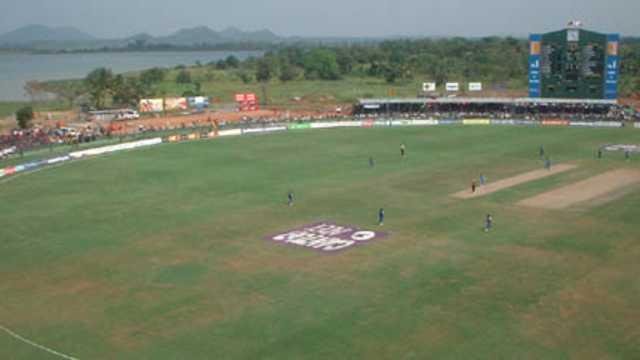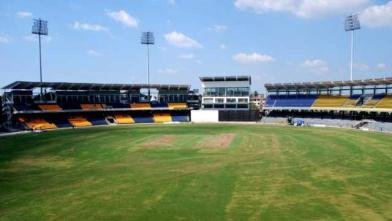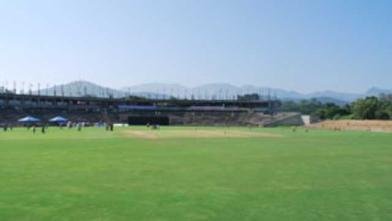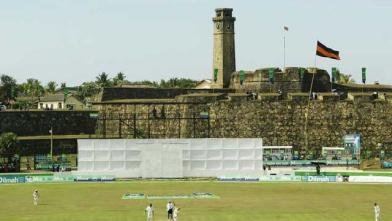Rangiri Dambulla International Cricket Stadium, located in Dambulla, North Central Province, Sri Lanka, is one of the most unique and scenic cricket stadiums in the country. With a seating capacity of around 30,000, it is renowned for its stunning backdrop of the Dambulla Rock and the Dambulla Tank (reservoir). Built in a record 167 days, the venue was inaugurated in March 2000 when Sri Lanka faced England in an ODI.
Despite initial challenges due to land lease issues, the ground has established itself as a premier limited-overs venue in Sri Lanka. It is the only international cricket stadium in the dry zone of the island, making it possible to host matches year-round, unaffected by monsoons.
The stadium regularly hosts ODIs, T20Is, and domestic matches.
It features:
- Modern player facilities & pavilions
- Spacious seating with panoramic views
- Corporate boxes, media centre, and VIP lounges
- Floodlights (installed in 2003) for day/night matches
- Picturesque setting with historic and natural surroundings
📍 Location & Accessibility
- City: Dambulla, North Central Province, Sri Lanka
- Proximity: Near Dambulla town, famous for UNESCO World Heritage Buddhist Cave Temples (dating back to 85 B.C.)
- Transport: Accessible via Kandy–Anuradhapura highway; good road links from Colombo (approx. 148 km away)
- Environment: Built in Sri Lanka’s dry zone, overlooking Dambulla Rock and reservoir; scenic yet peaceful atmosphere
🏏 Cricket History
- Inauguration: March 2000 – Sri Lanka vs England (ODI)
- First ODI: Sri Lanka vs England, March 2000
- Return of International Cricket: May 2003 – Hosted a full 7-match ODI series due to monsoons in southern Sri Lanka
Historic Matches:
- 2000: Sri Lanka vs England – Inaugural match of the stadium
- 2003: Hosted all 7 ODIs of a tournament after rains disrupted matches elsewhere
- 2010s: Regular venue for bilateral ODI series including India, Pakistan, and Australia
- Played a key role in Sri Lanka’s dominance in home limited-overs cricket
🌟 Key Highlights & Features
- Seating Capacity: ~30,000
- Speciality: Only international stadium in Sri Lanka’s dry zone, usable throughout the year
- Pitch Behavior: Bowler-friendly – seamers in morning, spinners in afternoon
- Facilities: Modern pavilion, corporate boxes, training nets, dressing rooms
- Floodlights: Installed in 2003, enabling day/night cricket
- Tourist Attraction: Near Dambulla Cave Temples & Sigiriya Rock Fortress
🏟️ Pitch & Outfield Characteristics
- Pitch Type:
- Morning: Helpful for seamers due to high water table and sweating
- Afternoon: Assists spinners as surface begins to crumble
- Batting Conditions: Challenging for batters; requires patience and technique
- Outfield: Large, well-maintained, slightly slower compared to coastal venues
- Day/Night Matches: Floodlights provide quality illumination; dew can influence play
🔥 Famous Matches & Tournaments
- 2000: Inaugural ODI – Sri Lanka vs England
- 2003: Hosted all matches of ODI series after rains in the south
- 2010: Sri Lanka vs India ODI series
- Regular host of Asia Cup ODIs and bilateral limited-overs series
- Popular venue for Sri Lanka’s tri-series tournaments
🎉 Fan Experience
- Atmosphere: Electric during ODIs, with passionate Sri Lankan fans
- Seating: Comfortable stands with wide views of rock and reservoir
- Family-Friendly: Safe and accessible with food stalls, beverage counters, and open seating areas
- Tourism Blend: Fans can combine cricket with visits to Dambulla Cave Temples, Sigiriya Rock Fortress, and Minneriya National Park
- Unique Appeal: Only dry-zone stadium in Sri Lanka with a breathtaking natural backdrop
👉 Rangiri Dambulla International Stadium is not just a cricketing venue but a blend of history, culture, and natural beauty. Its bowler-friendly pitch, rich cricketing history, and proximity to Sri Lanka’s world heritage sites make it a truly special stadium in world cricket.






